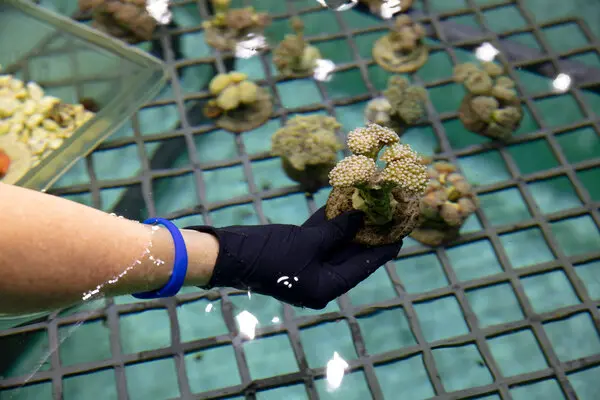By: Elaine Zhang
Recently, there has been an increase in coral being illegally shipped into the U.S. for unknown reasons.
Shipping Coral into the U.S.
An overlooked fact about coral is that coral is actually considered a marine animal rather than a plant. They’re tiny invertebrates that live in vast colonies to form coral reefs. Unfortunately, they’re also a target of marine life traffickers, who take them from their homes, including places like Indonesia, Fiji, Australia, and other tropical areas. The coral is then packed into bags of seawater, which are then boxed up and shipped to the United States. Usually, this is done legally, but types of coral that are banned from trade are usually hidden among the coral that is legal in the U.S.
Illegally Shipping Coral into the U.S.
The coral population has already dwindled because coral reefs all over the world face many problems. For example, they face disease outbreaks, bleaching events, ocean acidification, global warming, and more. These crises leave coral reefs in an already horrible condition, and the ones that aren’t damaged are then targeted by traffickers. Many marine life traffickers will take these corals and sell them to wealthy aquarium owners without telling the buyer that coral was acquired illegally.
According to a report from the United Nations Office on Drugs and Crime, corals were the third-most confiscated wildlife group between 1999 and 2018. And according to NOAA Fisheries, more than 25 coral species are considered endangered because of illegal coral smuggling. Plus, when illegal coral species are confiscated, they usually won’t be able to return to the wild since the officials don’t know where the corals were taken from, or the country doesn’t want to take the coral back.
What do they do with the Confiscated Corals?
When corals are confiscated, they are kept in facilities where professionals take care of them until the coral smuggler has gone through trial and a consequence has been decided. After the trial, because they can’t return to their original habitats, the corals are taken to aquariums. For example, a Turbinaria coral that was shipped to the Georgia Aquarium shortly after being confiscated in 2005. It took years for the Turbinaria to recover but now it has grown to over 2.5 feet in size and is now thriving in the aquarium. You can see it on the right of the Pacific Barrier Reef Exhibit at the Georgia Aquarium, where the coral has grown to look like a doughnut.











